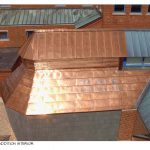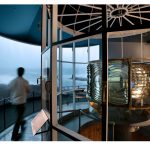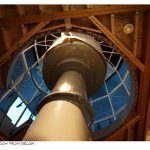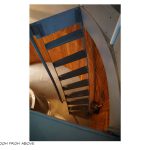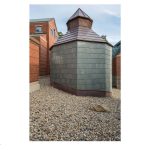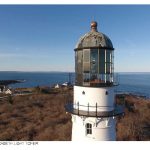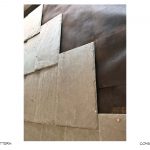Maine Maritime Museum: Into the Lantern Exhibit
Background
In 2015, the Coast Guard gifted the second order Fresnel Lens from the Cape Elizabeth light tower to the Maine Maritime Museum (MMM). This light tower is well-known from its depiction in Edward Hopper’s paintings. The commission was to design an exhibit gallery addition for the lens, an addition to their iconic Maritime History Building, c. 1987. Due to the highly sensitive preservation needs of the Fresnel Lens, the addition was to be a “black box.”
Design Concept
The addition was designed to house the exhibit, creating an immersion experience. This is the first gallery of its type to have a lens that is celebrated, interpreted, and simulates the experience of standing on the lantern gallery deck. Sound, sights, smells, and tactile references are all design elements.
Site Description
Seven locations were studied on campus; the best option was selected for its proximity to the main gallery space and public access. This location placed it compactly within a courtyard formed by three buildings, creating tight parameters for the optimal exhibit space, parabolic lens distance and fire code clearances.
The architects worked closely with the curator to recreate the 11-foot high pedestal, the lantern housing and surrounding gallery/catwalk. Embedded metal flooring simulates the tactile experience of walking on the gallery deck. The addition is 576 SF on the main floor, and a recreated Watch Room 8 feet below main level.
Design Challenges and Solutions
In plan, the addition maximizes the volume surrounding the lantern; in section, it follows the form of the original Maritime History Building (MHB). Challenging parameters included accommodating the lantern form, sight lines from the main gallery, inclusion of a 20-foot radiused projection screen. The angular plan design tweaks conventional expectations and achieves all of these program elements.
Non-fading green slate, laid in a unique Dutch Lap pattern wraps the exterior envelope. The upper roof continues the MHB tradition of copper standing seam; the lower roof uses copper, but as horizontally laid to create a more streamlined appearance. The clerestory is a solid copper-clad baffle to simulate glazing, but maintain a controlled daylight-less environment. The streamline roof and baffled clerestory offer subtle maritime metaphors. The Dutch Lap slate takes on a honeycomb appearance of the Fresnel Lens as well as allows a durable masonry surface distinct but compatible with the brick veneer.
Construction Cost
Total project cost $1 million with construction, exhibit and soft costs.







